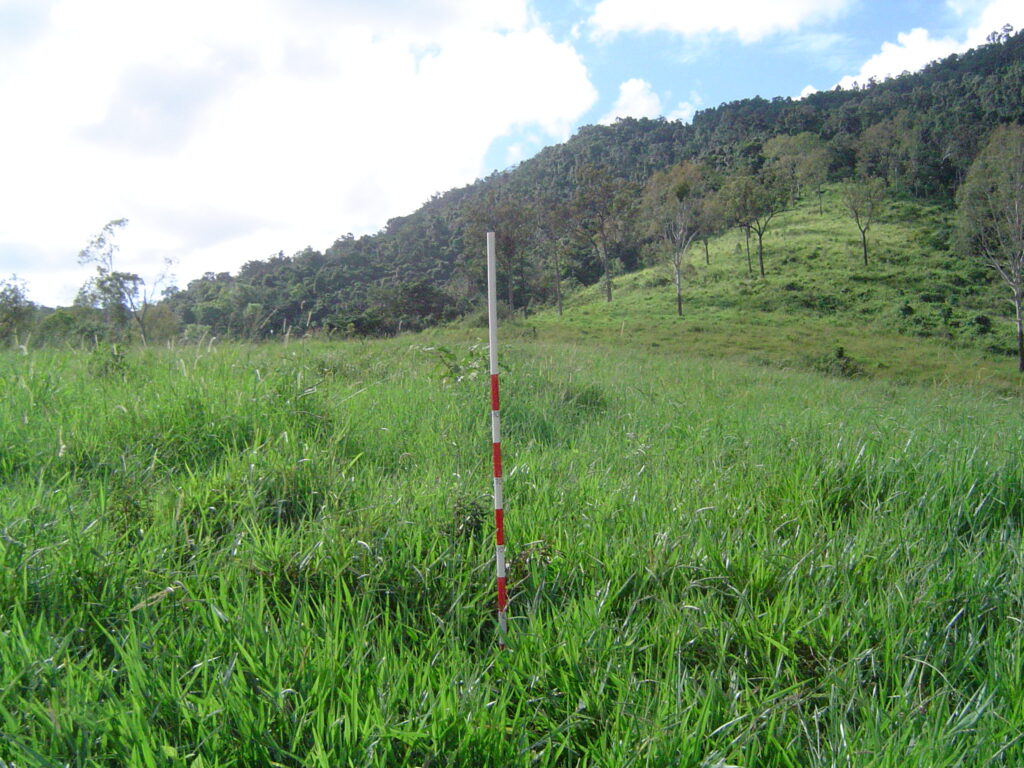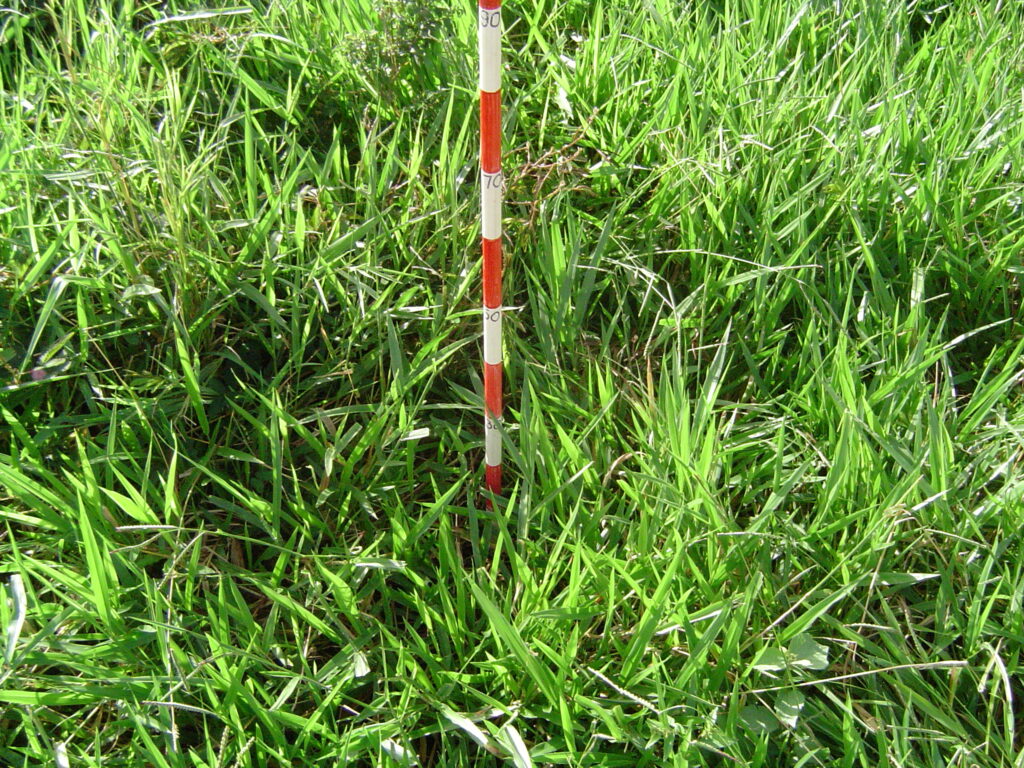Pasture budgeting on the wet coast isn’t rocket science, its much harder than that…
An accurate opening pasture yield is key to any successful forage budget. However, estimating the dry weight of improved pastures can be difficult to ascertain due to their high leaf to stem ratio and high water content.
Senior Beef Extension Officer Jim Fletcher set about making this important task easier by compiling a pasture yield photo standard book, featuring common sown grass species.
“Pasture species that have high leaf to stem ratios, like improved pasture species, have the potential to exhibit high water contents during the wetter periods of the year,” stated Mr Fletcher. “Some stoloniferous pastures, such as the Pangola or signal grass varieties, can have as little as 15% dry matter, however we need a reasonably accurate pasture dry matter figure to develop a forage budget, or to calculate if a paddock will meet the cattle’s nutritional needs,” he continued.
The images below are of signal grass pasture that was calculated at 20,000 kg/ha fresh bulk weight.


Mr Fletcher said, “The dry matter content in this grass was as low as 15.4%, meaning that although at first glance the pasture looked gloriously abundant, truth be told, there was really only 3000 kg/ha of pasture available. This makes by-eye assessment of pasture yield in the Mackay region a bit tricky, although not impossible. Moisture content is an extra element to the assessment that people need to consider when gauging their feed reserves for the year.”
“Another factor to take into account in this part of the world is the level of residual feed grown after the end of the wet season, which in some cases can be as much as an additional 100% of dry matter for the year!” he exclaimed.
The solution to complexity
Mr Fletcher says, “Don’t throw your hands in the air and say feed assessment is too hard, it is all about testing and adjusting,” he assured. “At first feed assessments are often way off, but in time accuracy will improve. Feed assessments are worth doing because in the wet coast regions grazing is often undervalued, and the better managers get a lot more out of their grass than everyone else.”
In the Wet Coast region, where nearly every paddock is planted to improved pasture species, poor feed assessments was a regular issue. To address this Pasture photo standards for the Mackay Whitsunday region publication has been developed to support producers.”
Pasture photo standards for the Mackay Whitsunday region
The pasture photos are divided into a collection of the five main sown pastures in the Mackay Whitsunday region.
These are:
- Pangola grass (Digitaria eriantha)
- Kazungula grass (Kazungula sphacelata cv. Kazungula)
- Rhodes grass (Chloris gayana cv. Callide)
- Tully grass (Brachiaria humidicola cv. Tully)
- Signal grass (Brachiaria decumbens cv. Signal)
Each set of photo standards incorporates a set of three photos for every yield comparison.
The publication also contains interesting anecdotes, a guide to estimating stocking rates, an explanation of pasture growth phases, and helpful imagery supporting proactive grazing regimes.
While initially compiled specifically for the Mackay Whitsunday region, this publication is of value to any property manager with improved pasture species. Download your copy (PDF, 8.8MB), here.
If you would like to discuss pasture budgeting, contact Mr Fletcher or other DPI extension officers.